Today’s thoughts involve reflections on the Interstate 95 corridor between Florida and the northeast U.S. The reviled freeway in some cases, Interstate 95 suffers from overrunning by travelers headed to/from Florida, a number that increases significantly every year. Respective DOT’s are trying to keep up with growth with various expansion and interchange projects throughout the 800-mile drive from Daytona Beach northward to Washington, D.C. Profiled below are some of the construction projects we’ve encountered over the last few weeks.
Interstate 95 is rather docile in Volusia County south of Interstate 4, but north of it is a different story. The influx of traffic from Orlando and its array of resort areas puts a crush of traffic on the freeway between Daytona Beach and Jacksonville. Surprisingly not all of this corridor is yet to six-lane capacity. St. Johns and Volusia Counties are already six-lanes, but Flagler County is not. Therefore crews are out working on the expansion of Interstate 95 to eliminate the bottleneck between Interstate 4 and Interstate 295. From the FDOT website, expansion of the 18.6-mile stretch in Flagler County began on March 14, 2005. Completion date is unclear.
In a related project pertaining to the Interstate 95 corridor, upgrading of the Florida 9A (Future Interstate 295) diamond interchange with Florida 202 (J. Turner Butler Boulevard – JTB) is also underway. Florida 9A provides an eastern bypass of downtown Jacksonville as well as a commuter route for southeast Jacksonville. The substandard interchange between the two freeways is the only thing preventing the eastern beltway from becoming part of the Interstate 295 corridor. Upon completion of the $80.5-million project, high-speed flyovers will shuttle motorists between Interstate 295 and the JTB. Work began in July 2005 with a 2009 completion date anticipated.
Further northwest near downtown Jacksonville is the project involving redesign of the Interstate 10 and 95 interchange (Exit 351B). At present the junction between the two pivotal Interstate highways is quite substandard with left-hand ramps and tight curves. Replacement of the junction involves creation of high-speed flyovers with the capacity necessary for the downtown area junction. Work commenced on February 15, 2005, with an overall completion of the interchange and associated adjacent projects slated for 2011. See TheBigI.info for project details (note that “Big I” was the same moniker given to the massive overhaul of the Interstate 25 and 40 junction in Albuquerque, New Mexico).
Also of interest to that interchange is the fact that U.S. 17 and Florida 223 now both share alignments with both Interstate 10 east from the Roosevelt Expressway interchange to Interstate 95 and Interstate 95 north to the U.S. 23 (Kings Road/Union Street) interchange to the north. Signs merely mention the overlap in passing, but shields are no longer posted along the U.S. 17 & Florida 223 surface routing as of December 2006.
It is not just the Interstate 95 interchange with Interstate 10 under construction, but essentially the entire corridor of freeway between Interstate 10 and the northern terminus of Interstate 295. That section of roadway includes a narrow four-lane segment of freeway between the Trout River Bridge and Interstate 295/Florida 9A. Widening of that freeway is underway in conjunction with a replacement of the Trout River Bridge. Work on the Trout River Bridge replacement began on March 7, 2005 and very recently resulted in a shift of traffic onto the new future southbound bridge from the original northbound bridge. Completion of the widening and new bridge should be completed by spring 2008. See http://www.troutriverbridge.com/”>TroutRiverBridge.com for additional info.
The adjacent project involves expansion of the original four-lane freeway from Zoo Parkway north to Interstate 295/Florida 9A. Work began in October of 2007 and early results see a new concrete roadway partially in place. Completion of that expansion project should occur by summer 2008. NorthFloridaRoads.com has a wide array of information pertaining to this project and many others throughout the Jacksonville metropolitan area.
Perhaps its not really related to Interstate 95 expansion, but one road facet of Interstate 95 is the essentially defunct Business Loop Interstate 95 at Darien. The overall expansion of the Interstate 95 corridor in recent decades sees a wide array of services within easy reach of the entire corridor (except for say between Orono and Houlton, Maine!). The need for Business Loops from the freeway essentially is nonexistent nowadays. Therefore the two remaining loops, one at Fayetteville, North Carolina, and the other at Darien, Georgia, have become less important by definition of Business Loop. The Fayetteville loop remains an important through route into Fayetteville from the north and south. The Georgia loop at Darien is basically unsigned outside of two guide signs per direction. One lone shield still in place however lies at the U.S. 17 intersection with Georgia 99, about a mile east of the south end of the Business Loop.
Georgia began expansion on their section of Interstate 95 in the 1990s and is vastly complete throughout the state. Most recent widening involves McIntosh and Liberty Counties midway between Brunswick and Savannah. In particular, a six laning of Interstate 95 will extend the widened portion of highway south of the U.S. 84 eastern terminus. Pictured here during road work at Exit 67, the project began in April of 2005 and should overall be completed by 2009. Four bridges along the corridor require replacing with wider spans; hence the lengthy construction process. From U.S. 84 northward, Interstate 95 is already six lanes to the South Carolina state line.
Once in South Carolina, Interstate 95 reduces to four lanes for all but a short ten-mile section between Interstate 20 and U.S. 52 at Florence. That six-laning was a recent addition, completed in April 2004, to the overall four-lane roadway. Interstate 95 in South Carolina generally serves through travel interests between Florida and the northeast. Anyone driving along the route, especially south of Interstate 26, will notice that three out of four cars are generally Florida-plated cars or cars emanating from the northeastern states. Because of this, South Carolina wants to institute tolls on its 199-mile section of Interstate 95. Why pay for a road yourselves when it benefits those from another state? At least that is the logic behind the latest push to toll the roadway in order to fund its modernization and expansion. Looking northward here is the Exit 8 off-ramp to U.S. 278 midway between Jasper and Ridgeland. I’ve found the parallel U.S. 17 and further north old-U.S. 17 to be a benefit when it comes to avoiding growing traffic congestion through this stretch.
Much further north, Interstate 95, as mentioned on the Interstate-Guide site, has been under construction for several years now involving the upgrading of the Springfield Interchange with Interstates 395 and 495 and the nearby Woodrow Wilson Bridge replacement project. The Capital Beltway, a commuter and through route of both Interstates 95 and 495 around Washington, D.C., has undergone such development and increases in traffic in recent decades that the road has declined into an utter state of failure on some sections. To augment some of these issues, VDOT began upgrading the rather substandard interchange between Interstate 95, 395 (Shirley Highway), and 495 (Capital Beltway) at Springfield in 2002. Work on that interchange is vastly completed, with high-speed flyovers now facilitating the movements between the north-south and east-west freeways. Overall completion of that project is expected by late-2007. SpringfieldInterchange.com provides more detail on this project.
Further east, road work continues in earnest involving the modernization of Interstates 95 & 495 between the Springfield Interchange and the Potomac River. Two aspects of the project involve the reconstruction and redesign of interchanges with both Telegraph Road (Virginia 241) and U.S. 1. Pictured here is gridlock along Interstate 95 south & 495 west near the Virginia 241 (Exit 168) interchange. Work began on this junction in mid-2004 and should be complete by late 2011. The lengthy time table involves overall road work involving not only the Capital Beltway but also the adjacent Virginia 241. East of there at junction U.S. 1, a similar project is underway with completion expected by mid-2009. Improvements here will aid to the overall expansion and improvement of the Capital Beltway in between. See WilsonBridge.com for more information.
Last but not least on our menu is the Woodrow Wilson Bridge replacement project itself. Begun in mid-2001, work involves the wholesale replacement of the original draw bridges over the Potomac River on which Interstates 95 and 495 travel. As of late 2006, the future eastbound (outer) bridge was open to travel and carries six-overall lanes of Capital Beltway drivers. Work continues on both removal of the original spans and building of the new westbound (inner) bridge. Upon completion, the new Woodrow Wilson Bridge will remain a draw bridge, but with improved capacity to the order of ten lanes with the allocation of two additional HOV or transit lanes for the future.
Adjacent to the Woodrow Wilson Bridge, Interstate 95 in Maryland also is undergoing expansion and modernization. The Interstate 295 & Maryland 210 interchanges remains under construction for redesign and should be completed by mid-2008. The new ramp configurations accommodate widening of the Capital Beltway approaches to the Potomac River crossing.
Additional Sources:
http://www.dot.state.fl.us/publicinformationoffice/construc/constmap/d5.htmhttp://www.sr9a.info/sr9aprojects.html- “Widening Coastal Georgia’s I-95.”
http://www.acppubs.com/article/CA6398505.html

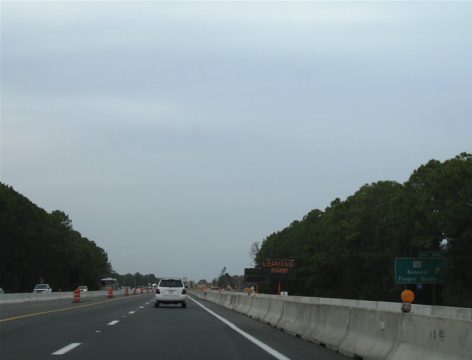
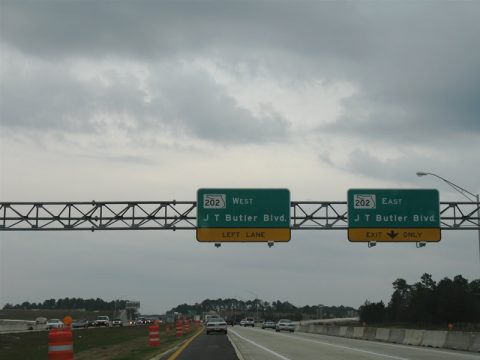
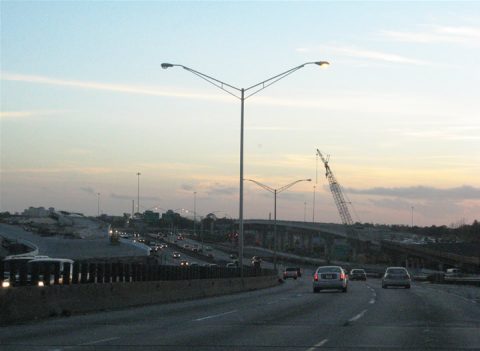
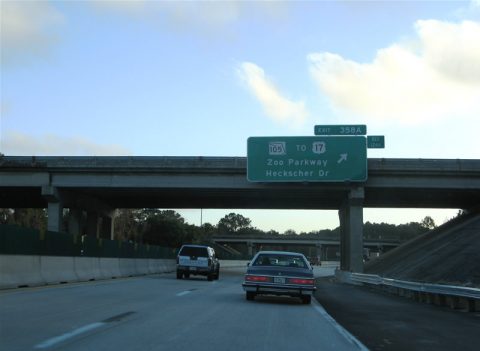
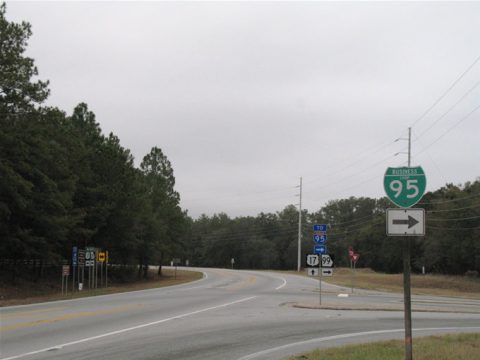
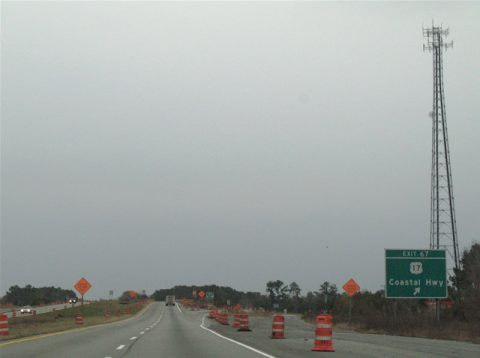
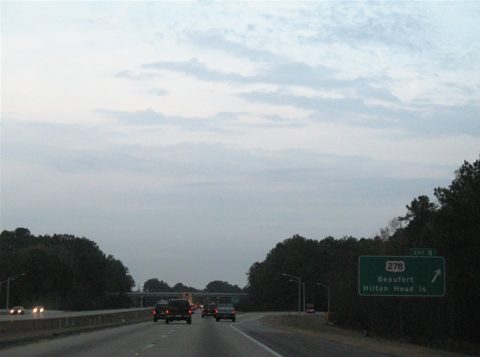
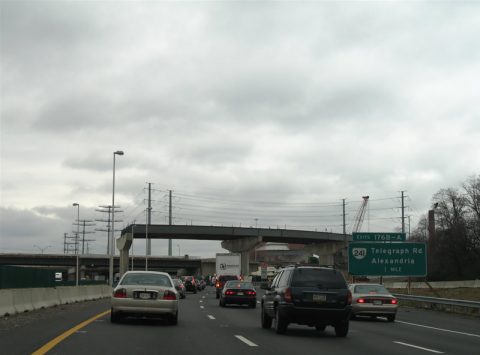
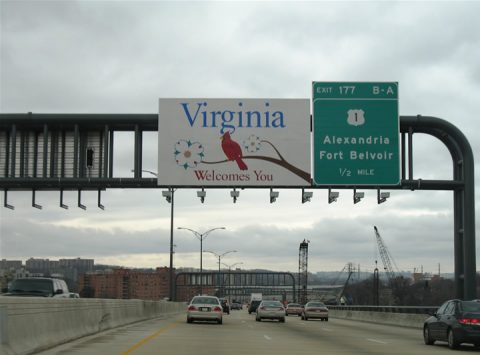
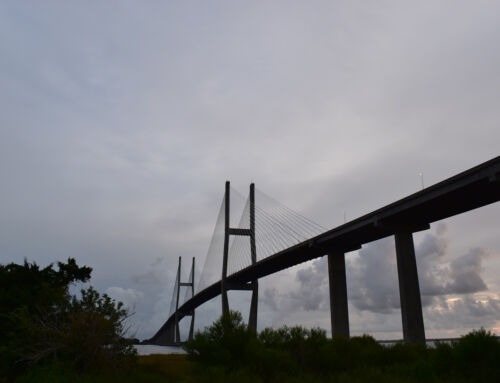
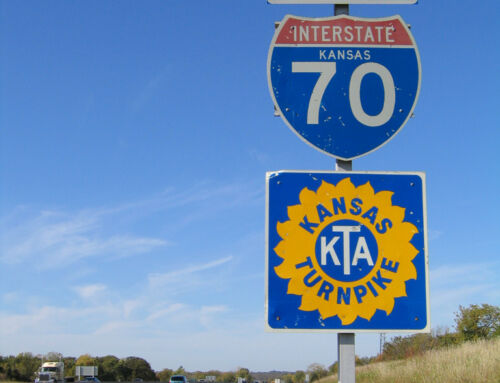
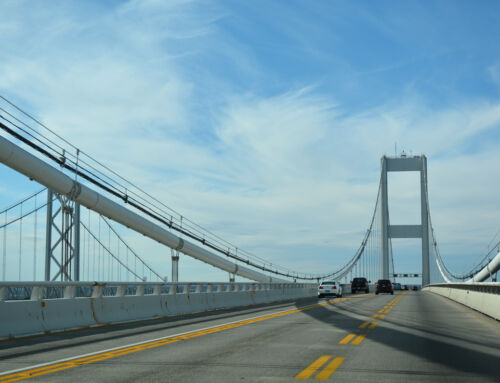
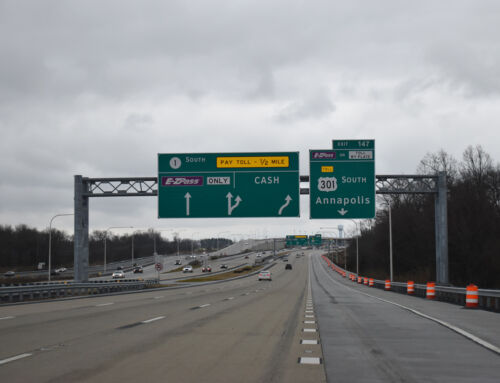
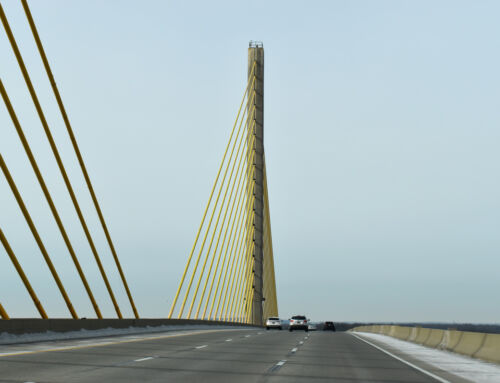
Typo: VA 241 is Exit 176 of I-95 not Exit 168(there is no exit 168 currently). I do like the completed Springfield Interchange though especially the I-95 flyovers.